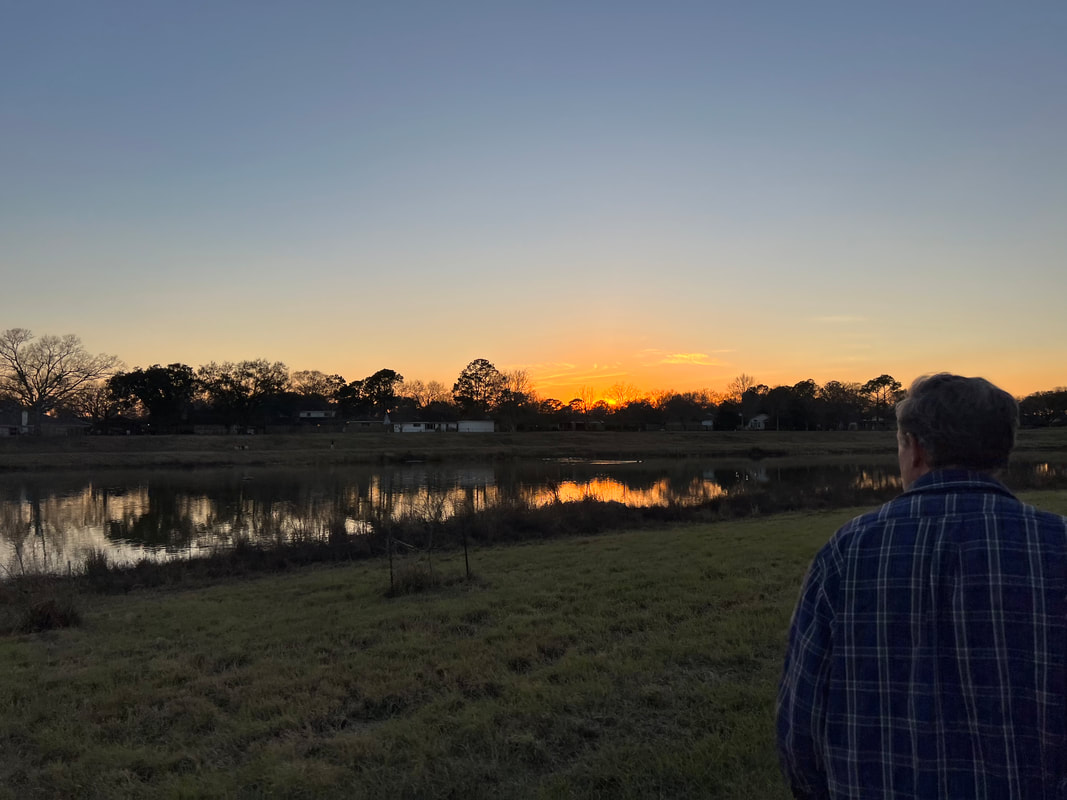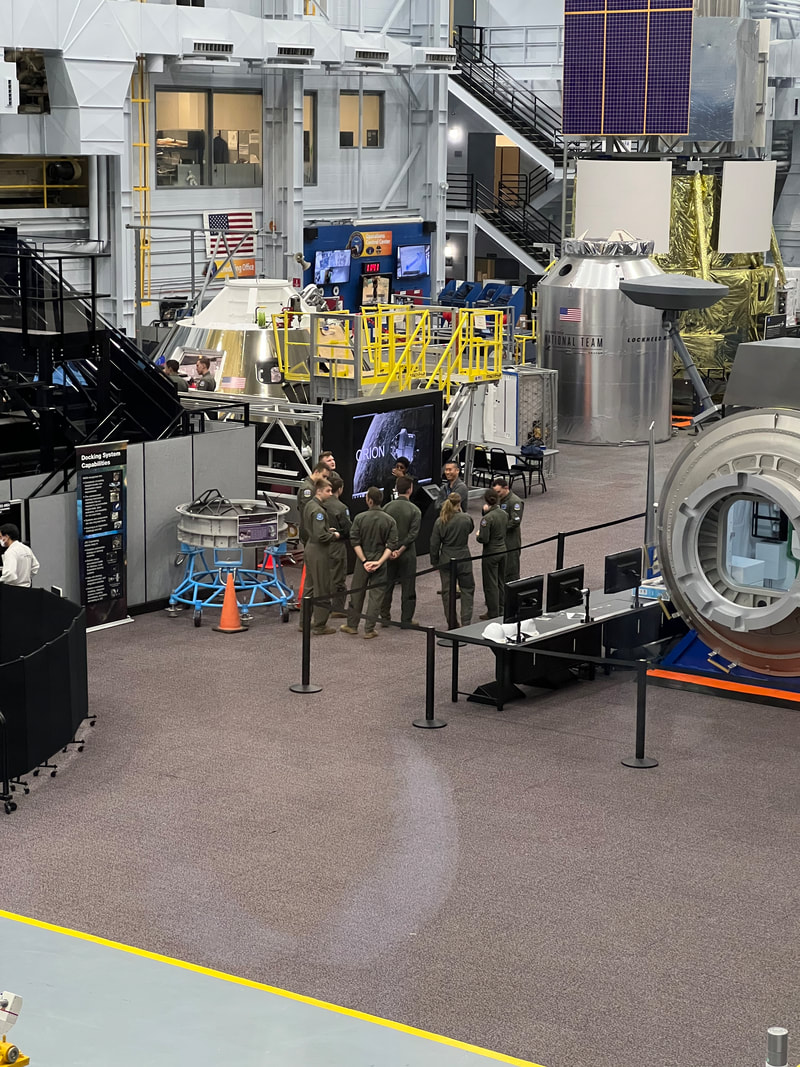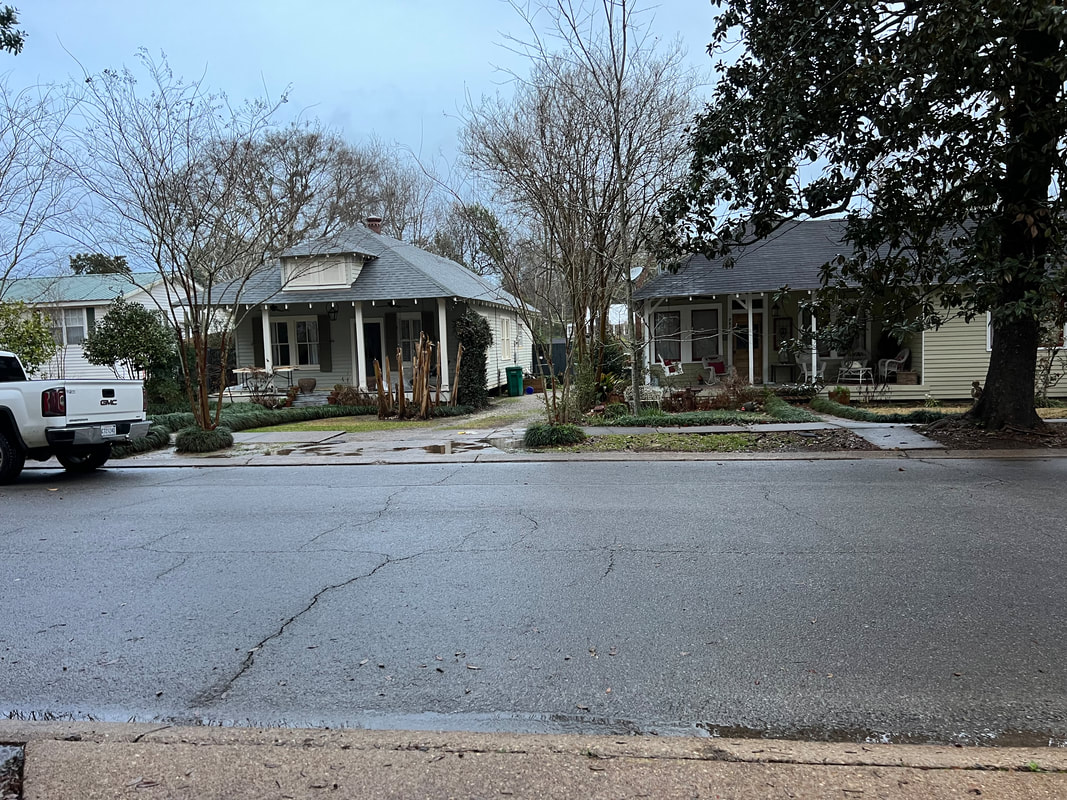We walked into the main building, which has a bunch of changing exhibits. We decided to immediately sign up for one of the two tram tours being offered that day, which take you to the real Johnson Space Center on the other side of the road. The tram tour didn’t leave for a half hour or so, so we wandered the main building and looked at the exhibits about the Artemis project of going to Mars, and an evolution of space suits. The half hour passed very quickly, and we got on the tram tour which took us to the place where the astronauts are training, which besides real astronauts also has mock ups of all of the space vehicles and equipment used to train the astronauts. After that, we went to the museum where real rockets are on display, including a real Saturn V which was recovered and reconstructed to be displayed at Space Center Houston.
That tour was so interesting that we signed up for the other tram tour as soon as we returned to the Visitor Center. The other tour didn’t leave for a couple of hours, so we had time to tour constant exhibits, which include a realistic mock-up of a space shuttle, as well as the actual 747 used to transport it. One of the real SpaceX rockets is also on display, and while you can’t go inside that like you can the space shuttle and the 747, it’s pretty impressive to see a rocket that still has scorch marks on it from its many trips into space. The exhibits inside the building include a full-size Skylab model with artifacts from the real Skylab, as well as artifacts and historical exhibits about the International Space Station, the Apollo project, and all of the other NASA projects since the very beginning of space exploration.
We had just enough time to finish that part of the museum before our second tram tour, which was a trip to the Mission Control Center which was in use for the Apollo XI moon landing. The Mission Control Center has been painstakingly preserved to be exactly as it was when the first moon landing was made, and the Space Center does a wonderful program where all the screens light up and change and you can hear the audio between the astronauts and Mission Control as the moon landing was made and man first set foot on the moon. I remember, as a kid, watching what was televised from that room, and while it looks like what I remember, it seemed like it should have been bigger.
All of the tours and exhibits were very thought provoking for us. We’re an age where we remember most of the events that are explained as the history of the space program, and while we were vague on a lot of the details, we decided it was because this isn’t history that we learned in school, but is history that we lived and perceived as whatever age we were when it happened, and those perceptions changed as we grew up. When one of the tour guides was talking about the Apollo I tragedy where three astronauts were killed in a fire, I didn’t remember any details of what happened, but I suddenly remembered my space obsessed engineer father crying as he watched the news. I also remembered sitting on my father’s lap in the easy chair in front of the TV to watch the moon landing, as my father explained that this was history that would change mankind, which my 7-year old self didn’t really get. Of course when Challenger exploded, and then again when Columbia exploded, Tom and I both remember exactly where we were and what we were doing. I think because we have lived most of the era of space exploration, we never really thought about the continuous forward progress of the overall program, which is brought sharply into focus by the displays and experiences at the Space Center. Right now, the focus is on re-establishing moon exploration in preparation for a trip to Mars, which could, if everything goes as planned, possibly happen in about 20 years. It’s conceivable that Tom and I could live to 80, which is how old we’ll be when it happens, and the thought that our lives will span the first man on the moon to the first man on Mars really puts the scope of the program in perspective - both for how quickly progress is made, and for how many generations must pursue the continued effort to achieve these major milestones.









































